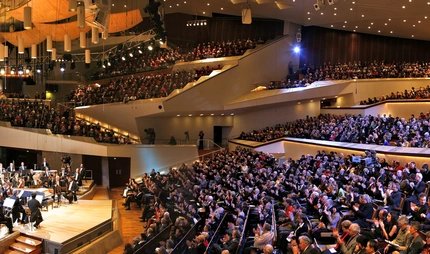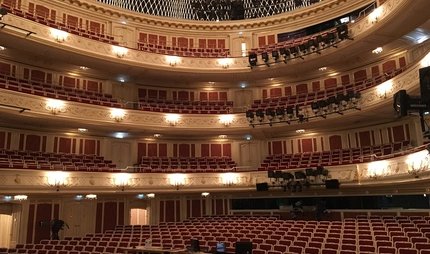
Musikinstrumenten-Museum
Historical sounds in the Musikinstrumenten-Museum
Enter the world of European musical instruments from the 16th to the 21st century at the Berlin Musikinstrumenten-Museum. The imaginations of the instrument builders have sometimes led to very strange results. Have you ever heard of the walking stick violin or the sausage bassoon? In the Musikinstrumenten-Museum you will find them all. The exhibition has more than 3,000 instruments on display, presented by the State Institute of Music Research for Prussian Cultural Heritage. Not only that: the musicians’ tools are lovingly maintained and still in useable condition, allowing you to still hear the sounds of European music history today.

A collection for the eyes and ears
Since 1984, the imposing house with its modern façade and large canopy has been the seat of the Musikinstrumenten-Museum in Berlin. Philipp Spitta and Joseph Joachim establish the collection in 1888. A large part of the more than 4,000 instruments are lost during the Second World War. Today, the museum once again has the most representative collection in Germany. You go through glass entrance doors of the foyer and immediately enter the large, bright exhibition room. Reminiscent of a concert hall, the room is circular with a well lit gallery. The focus is on the white-gold Mighty Wurlitzer, the largest cinema and theatre organ in Europe, surrounded by countless key instruments. Through the large windows, daylight falls on harpsichords and clavichords from the 16th, 17th and 18th centuries. The four Ruckers harpsichords are especially impressive. The richly painted instruments from the 17th century come from the famous workshop of Antwerp. There are also showcases of string instruments including violins from the workshops of the Italian masters in Cremona. The names Amati, Guarneri and of course Stradivari sound here. A wide spiral staircase leads you up to the extensive gallery where you will find many key, string, wood and brass instruments, before finally approaching the modern age with early electronic instruments. The Mighty Wurlitzer performs live at a screening each Saturday accompanied by thunder, chirping birds and ringing bells, taking you into the world of early cinema and theatre.
Special features at the Musikinstrumenten-Museum
- Forte piano, on which Carl-Maria von Webers composed his "Freischütz".
- The harpsichords of Bach and Frederick the Great.
- Rare Naumburg wind instruments from the early Baroque.
- Frederick II of Prussia’s flute collection.
- Anton Mitteis’ Arpeggione (string instrument) from the 19th century.
Berlin Philharmonic is just around the corner
The Musikinstrumenten-Museum is located directly at the Berlin Philharmonic and forms part of the Philharmonic and Chamber Music Hall ensemble. The house offers guided tours daily at 1:30 pm, in German, English or other languages upon request. On Tuesdays at 1 pm each week you can experience one of the original lunch concerts. In addition to the 40 to 50-minute programme, you can also enjoy a good meal.
Tips for visiting the Musikinstrumenten-Museum
The museum is conveniently reached by public transport via the Philharmonie Süd bus line with the M41. Alternatively, take the S-Bahn lines S1, 2, 5, 25 or the U2 underground to Potsdamer Platz. From here it is about a 5 to 8 minute walk to the museum. The Philharmonic and the Sony Center car parks are just around the corner. The Museumspass gives you free admission. Audio and multimedia guides are available in German and English. Enjoy public guided tours with exciting sound samples on Thursdays at 6 pm, or Saturdays at 11 am. Book special tours with selected topics for children and young people by arrangement.



